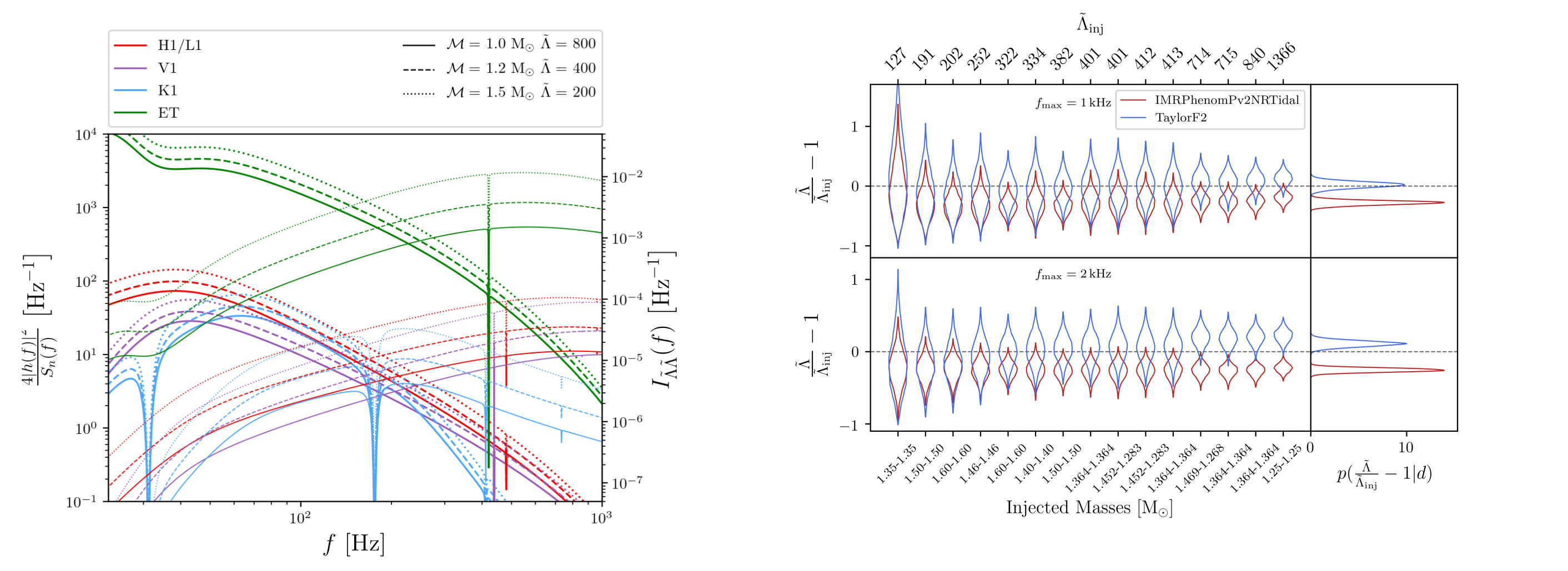Waveform systematics in the gravitational-wave inference of tidal parameters and equation of state from binary neutron star signals
Rossella Gamba, Matteo Breschi, Sebastiano Bernuzzi, Michalis Agathos, Alessandro Nagar
Preprint on arxiv:2009.08467 [gr-qc]
Published in Phys.Rev.D 103 (2021) 12, 124015
Published:
Gravitational-wave signals from binary neutron star coalescences carry information about the star’s equation of state in their tidal signatures. A major issue in the inference of the tidal parameters (or directly of the equation of state) is the systematic error introduced by the waveform approximants. We use a bottom-up approach based on gauge-invariant phase analysis and the Fisher information matrix to investigate waveform systematics and help identifying biases in parameter estimation. A mock analysis of 15 different binaries indicates that systematics in current waveform models dominate over statistical errors at signal-to-noise ratio (SNR) ≳80. This implies biases in the inference of the reduced tidal parameter that are are larger than the statistical 90% credible-intervals. For example, while the neutron-star radius could be constrained at ∼5% level at SNR 80, systematics can be at the ∼10% level. We apply our approach to GW170817 (SNR ∼30) and confirm that no significant systematic effects are present. Using an optimal frequency range for the analysis, we estimate a neutron-star radius of 12.5+1.1−1.8km. The latter is consistent with an electromagnetic-informed prior and the recent NICER measurement. Exploring SNR ≳100 in view of third-generation detectors, we find that all the current waveform models lead to differences of at least 1-sigma in the inference of the reduced tidal parameter (for any value of the latter). We conclude that current waveform models, including those from numerical relativity, are insufficient to infer the equation of state in the loudest (and potentially most informative) events that will be observed by advanced and third generation detectors.

